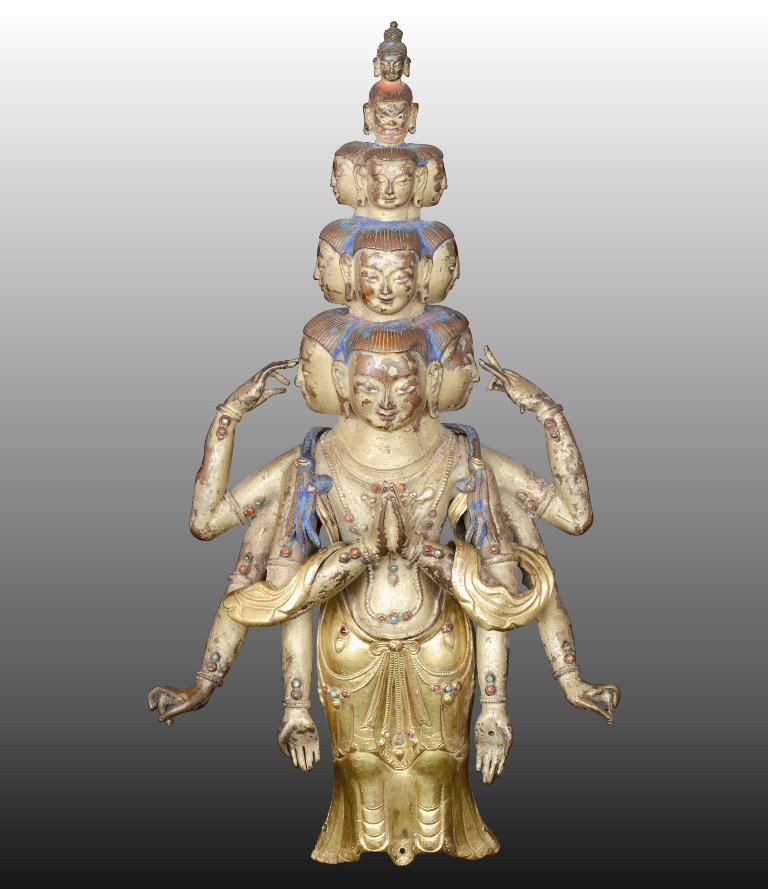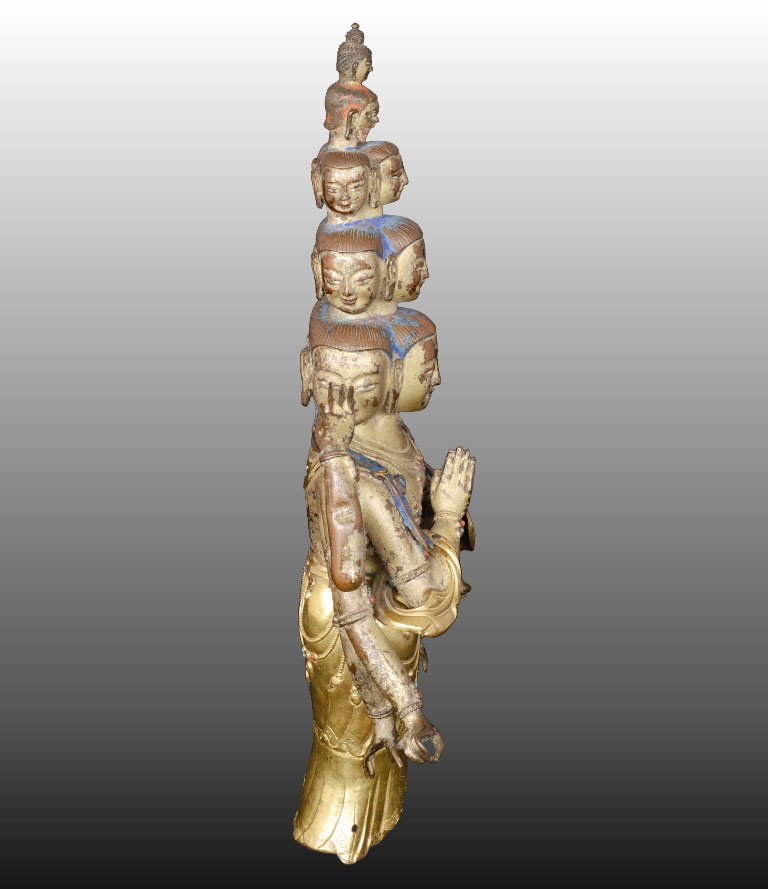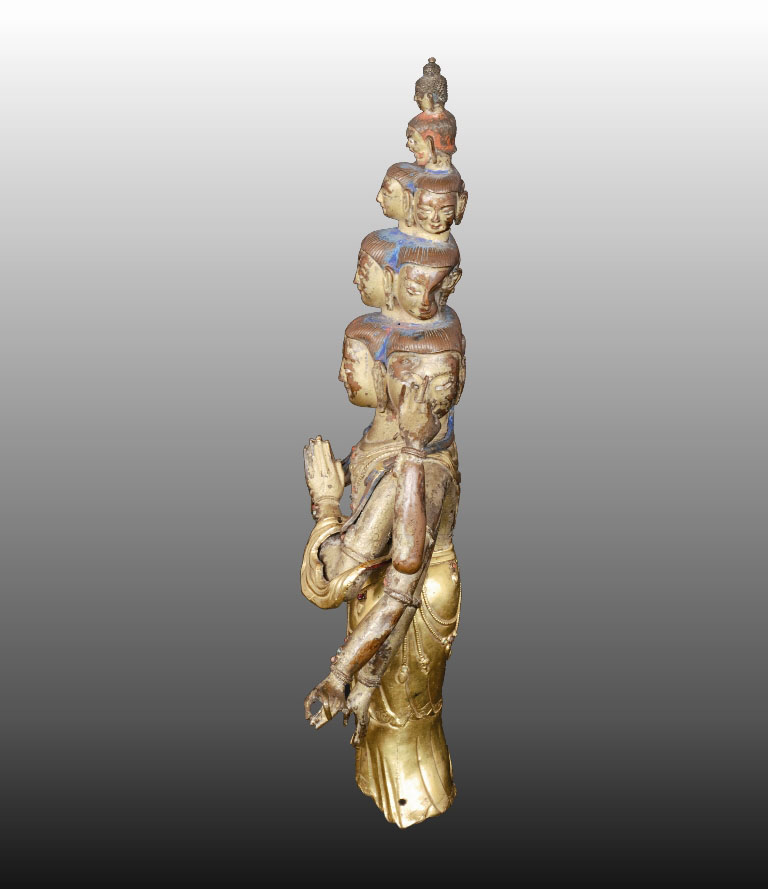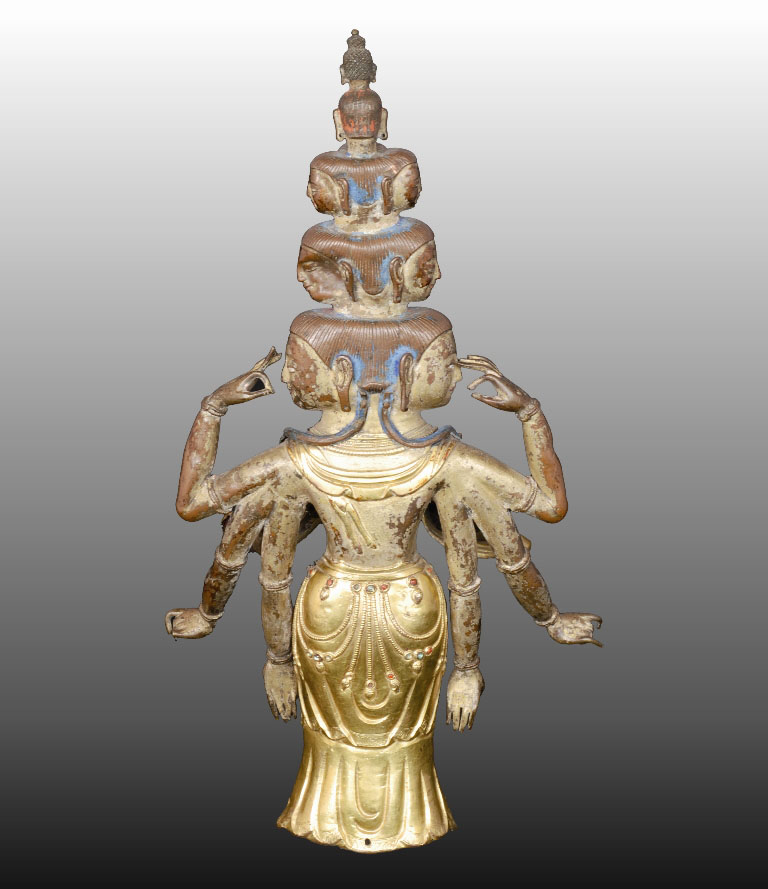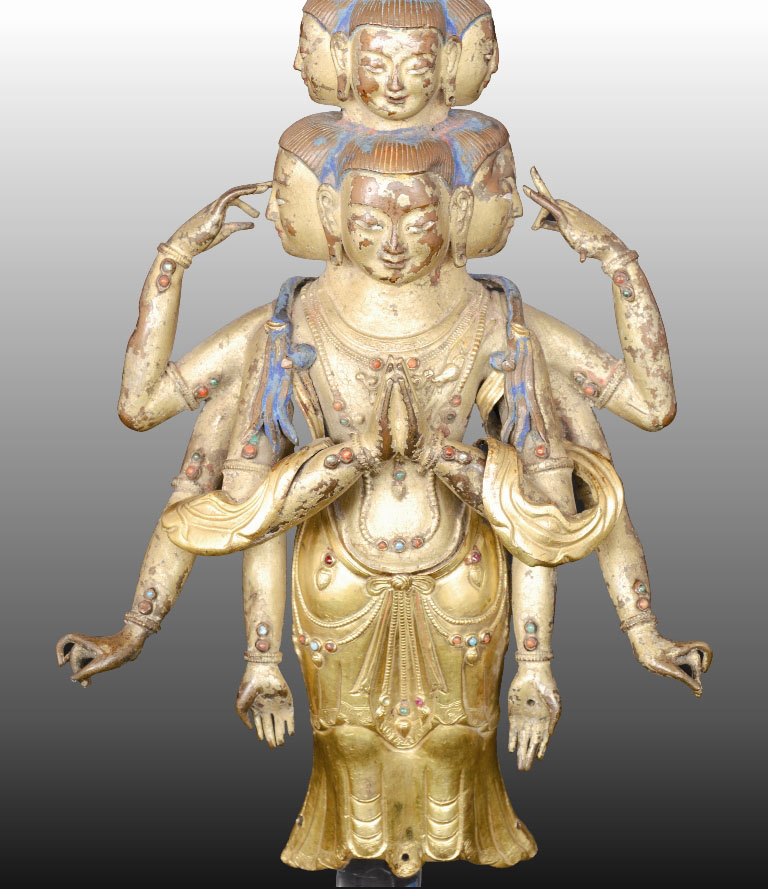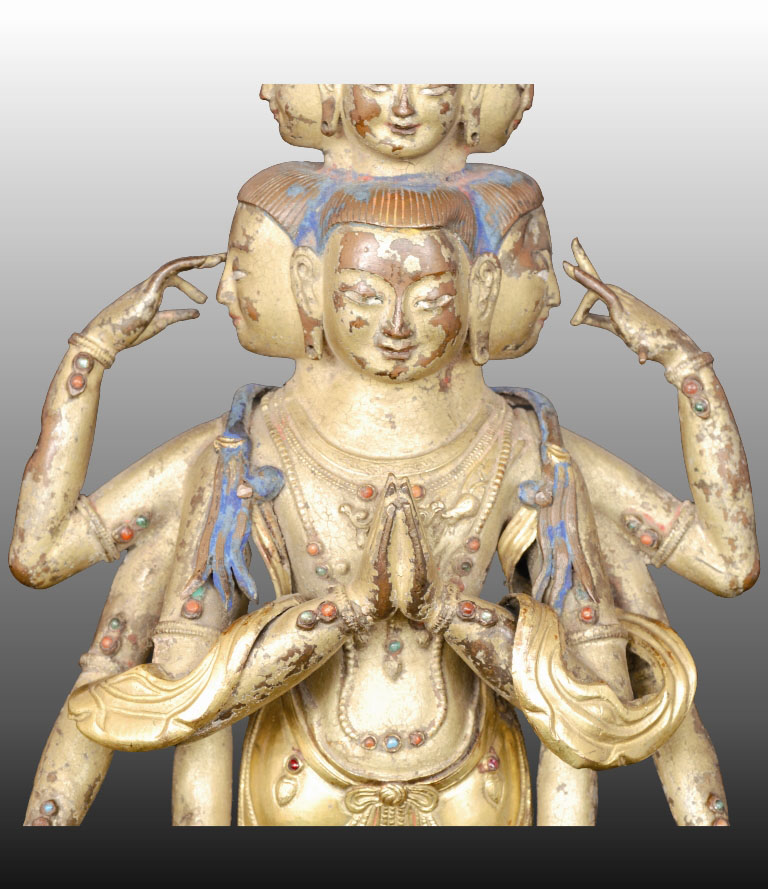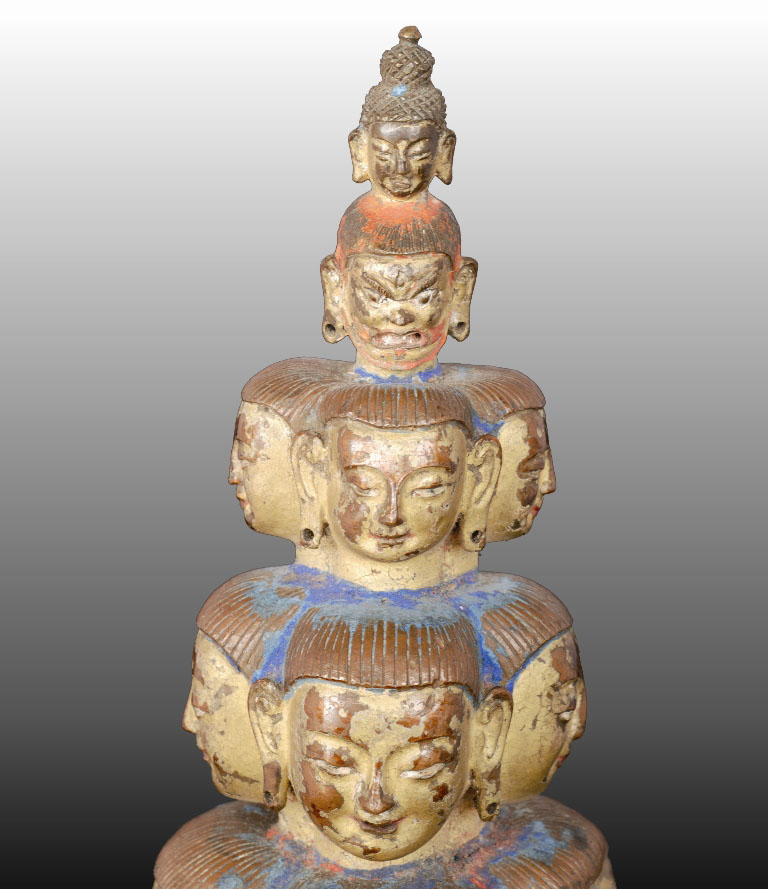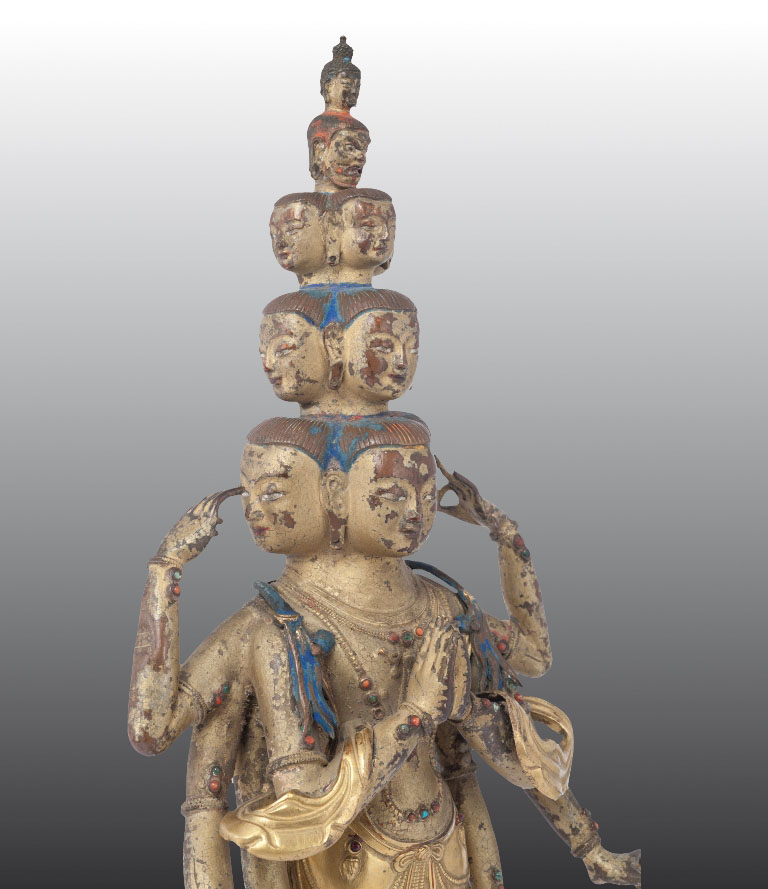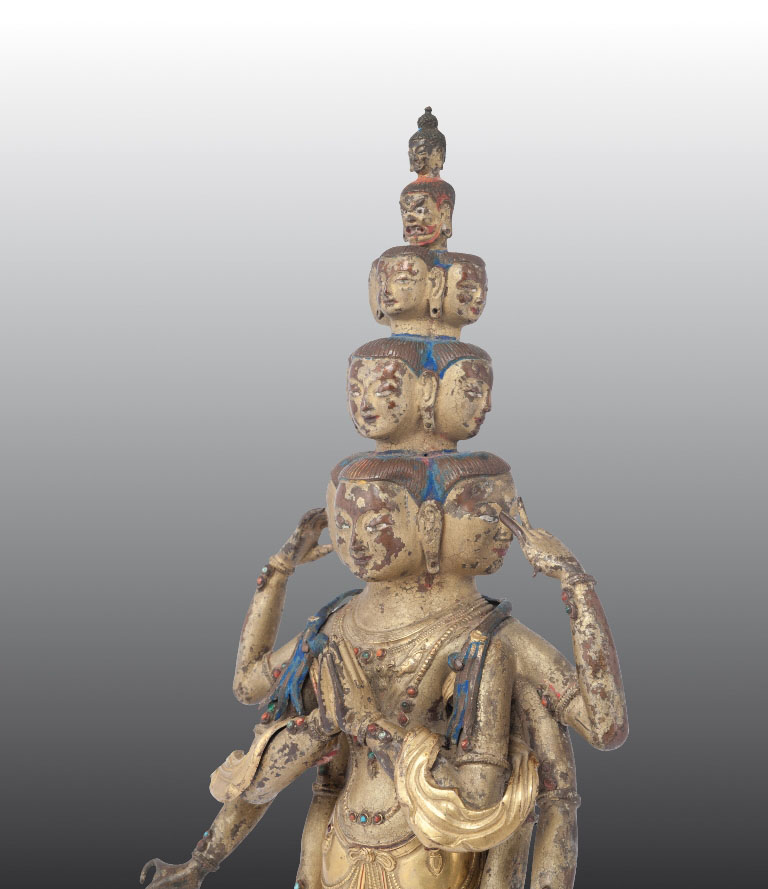|
|
«« go back
Ekâdashamukha Lokeshvara
Tibet or Mongolia - Gilded bronze - Height 33 cm - 17th-18th century
The Bodhisattva Avalokiteshvara, or Lokeshvara, is spiritually linked to the Family of Amitâbha and in India he was especially popular in the Buddhist tradition of the “Great Vehicle” (Mahâyâna), later becoming the most revered of all Bodhisattvas in Tibet. As his name suggests, he is “The Lord Who Looks Down” compassionately upon those beings who need to be saved. Song-tsen-gam-po (Srong- brtsan-sgam-po), the Tibetan king who unified Tibet in the 7th century making it one of the most powerful kingdoms in Central Asia, was considered to be an earthly manifestation of this important Bodhisattva whom he adopted as his own tutelary deity. A thousand years later, with the establishment of the theocratic government led by the Dalai Lamas, the latter were also considered man- ifestations of Avalokiteshvara.
A number of more complex manifestations were added in India to the essential one, that of Padmapâni (see nos. 2 and 3), such as the triumphal Ekâdashamukha (“Eleven- Headed”) Lokeshvara reproduced here. The first documented image of Ekâdashamukha dates back to the 5th– 6th century and can be seen in a relief in cave no. 41 at Kânheri, India(1). The ten heads of the Bodhisattva, surmounted by that of the Buddha Amitâbha, represent the ten stages of progress along the Bodhisattva path culminating in the attainment of Buddhahood (2). The increase in different manifestations of the same deity, often characterized by the multiplication of head, arms and legs with the aim of demonstrating his/her omnipotence, can be ascribed to developments which occurred relatively late in the Buddhist doctrine and pantheon in India (3). Ekâdashamukha Lokeshvara’s essential attributes, lost here, are the rosary, the lotus flower, which is the emblem of the Cosmic Family he belongs to, and the ewer. The loss of the latter is indicated by a hole in the palm of the Bodhisattva’s left hand, set low and turned towards the observer. The rosary betrays Avalokiteshvara’s Hindu con- ceptual and iconographic origin, as it is a privileged attribute of Shiva in his capacity as Yogeshvara (“Lord of Yoga”), on whose name, as indeed on that of Lokeshvara (“Lord of the World”), another epithet of Shiva (4), the followers of Buddhism modelled the name of Avalokiteshvara (5).
The style characterizing some of the details of this image, such as the long, narrow eyes, the outer ends of which are upturned, the large eyebrow arches which follow the same shape as the eyes, the long garment formed of a double veil and the lotus-shaped base, is related to metal statuary produced under the Qing dynasty in China during the 18th century (6), sometimes by Mongolian artists (7), although there are no specifically Mongolian stylistic elements in this particular statue (8). (1) Erberto Lo Bue, La ruota del Dharma di Alci, in Erberto Lo Bue - Chiara Bellini, Arte del Ladak. Tesori di arte buddhista nel Tibet indiano dall’XI al XXI secolo, Jaca Book, Milano 2011 (forth- coming); Susan L. Huntington - John C. Huntington, The Art of Ancient India, Weatherhill, Boston - London 2001, p. 265, fig. 12.27.
(2) Susan L. Huntington - John C. Huntington, The Art of Ancient India, op. cit., p. 265, fig. 12.27. (3) Erberto Lo Bue, Tibet. Dimora degli dei, La Rinascente, Mi- lano 1991, p. 52, fig. 24.
(4) David Snellgrove, Indo-Tibetan Buddhism. Indian Buddhists & Their Tibetan Successors, Shambala, Boston 1987, pp. 60- 61.(5) Cf. Erberto Lo Bue, Avalokiteshvara, in Erberto Lo Bue et al., Images of Faith. A Private Collection of Himalayan Art, Rossi & Rossi, London 2008. p. 10, fig. 2.
(6) Cfr. Ulrich von Schroeder, Indo-Tibetan Bronzes, Visual Dhar- ma Publications, Hong Kong 1981, p. 552, fig. 158C. (7) Cf. Gösta Montell, The Idol Factory of Peking, in Ethnos, vol. XIX/1-4, 1954, pp. 143-157.
(8) Cf. Gilles Béguin et al., Trésors de Mongolie. XVIIe-XIXe siè- cles, Musée National des Arts Asiatiques Guimet, Parigi 1994; N. Tsultem, The Eminent Mongolian Sculptor - G. Zanabazar, Ulan-Bator, 1982. ALC (Free Circulation)
|
